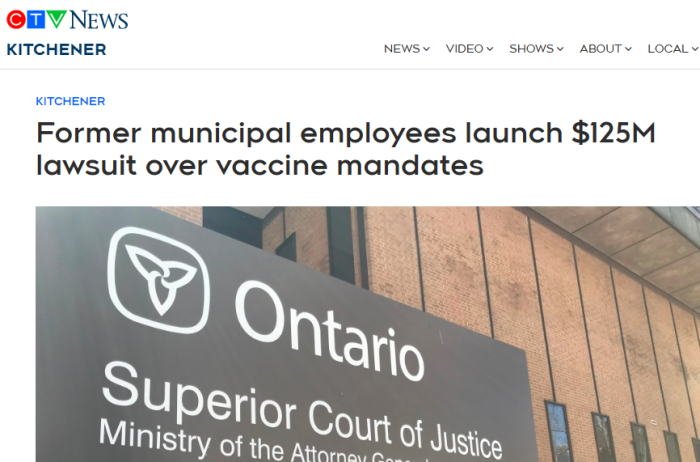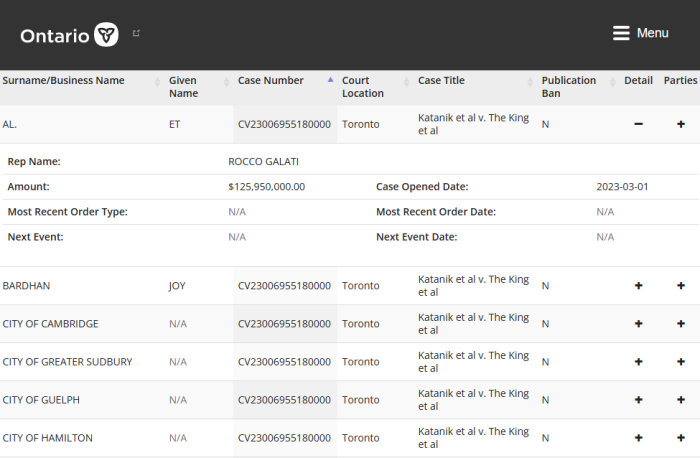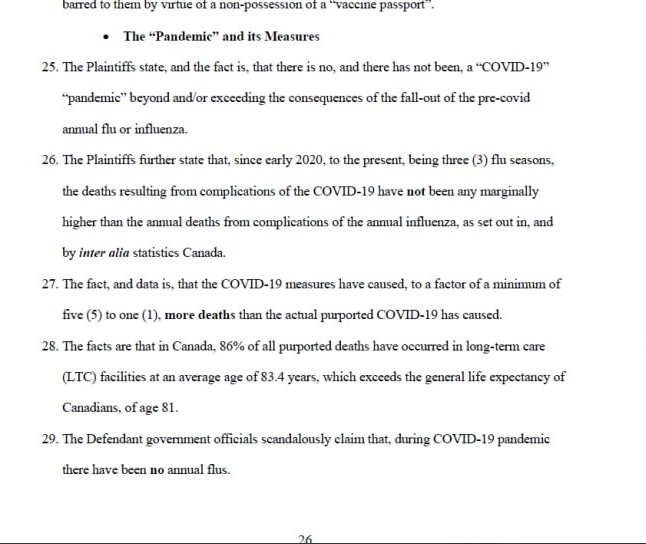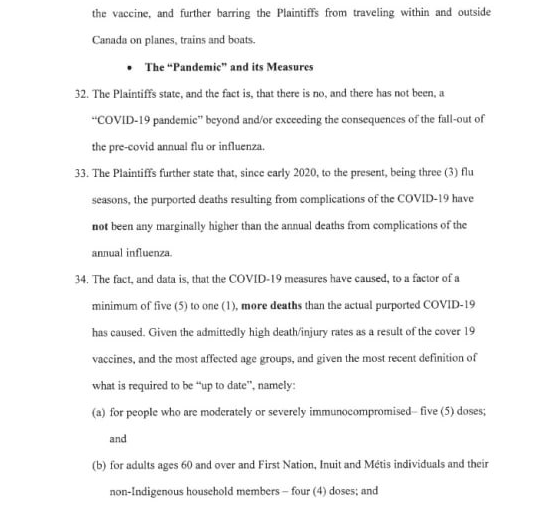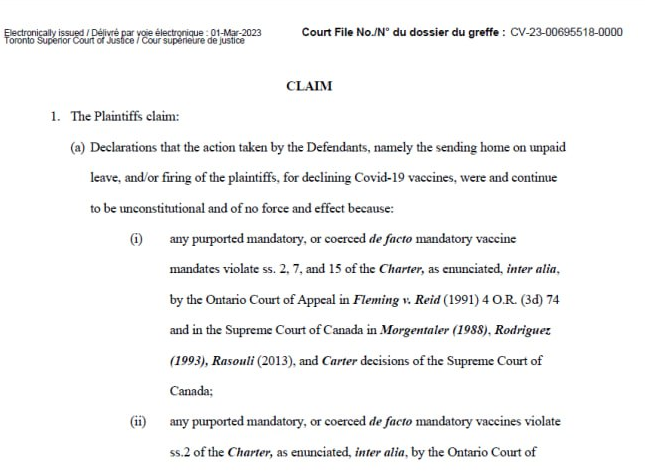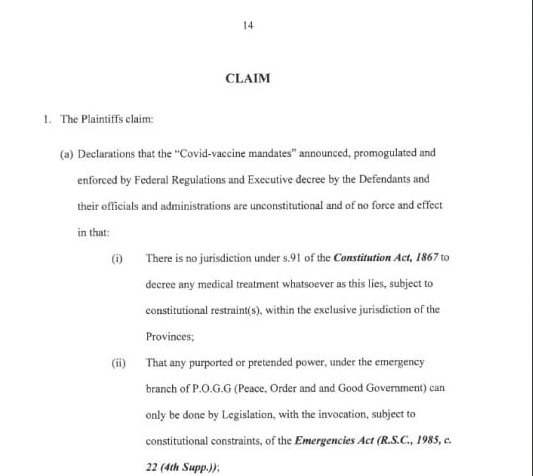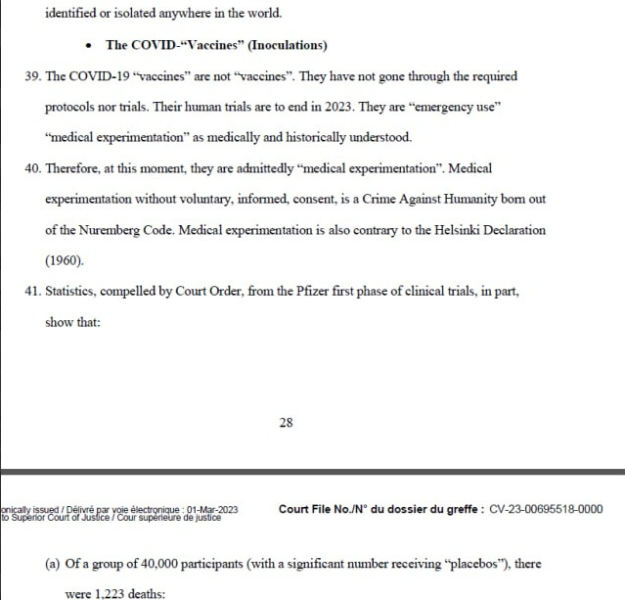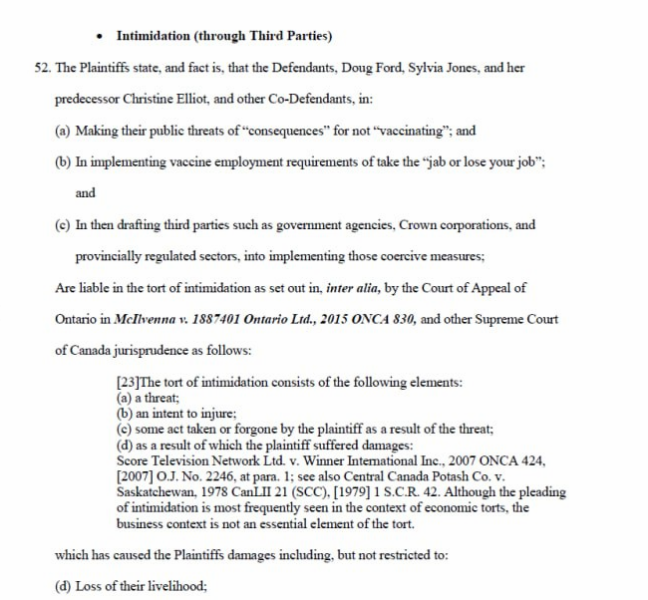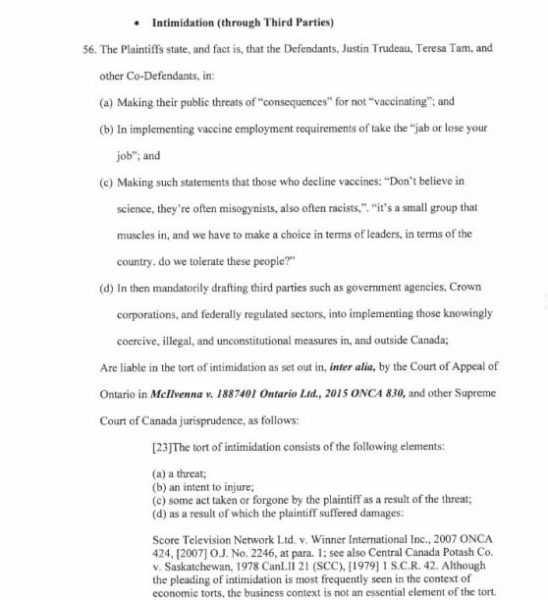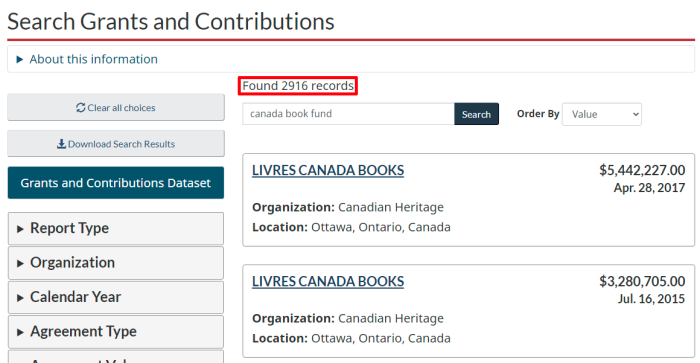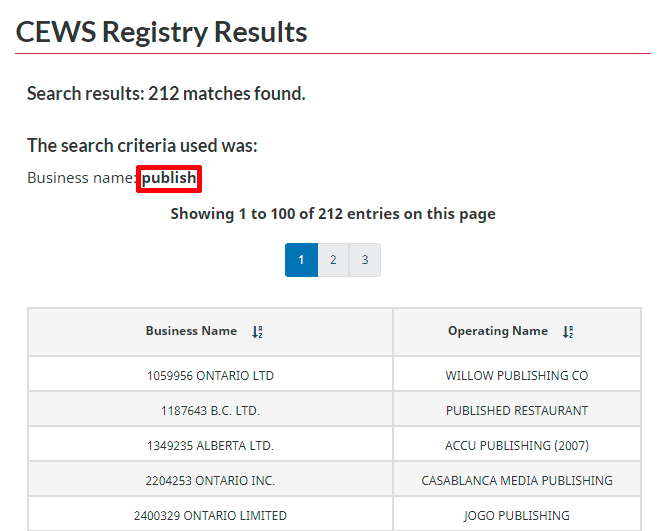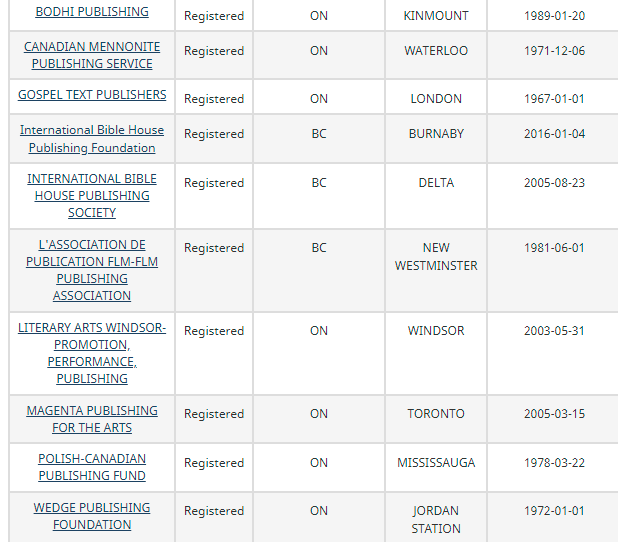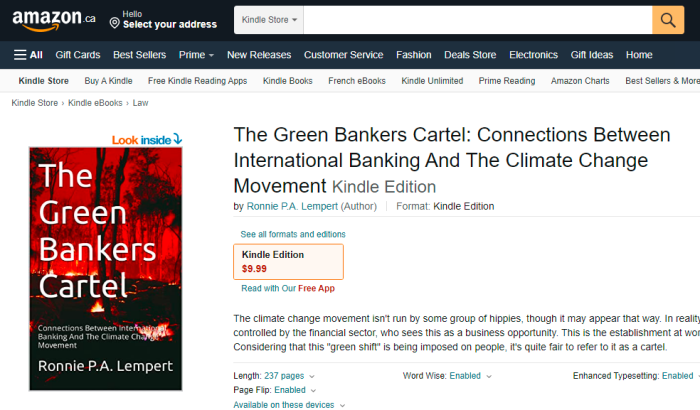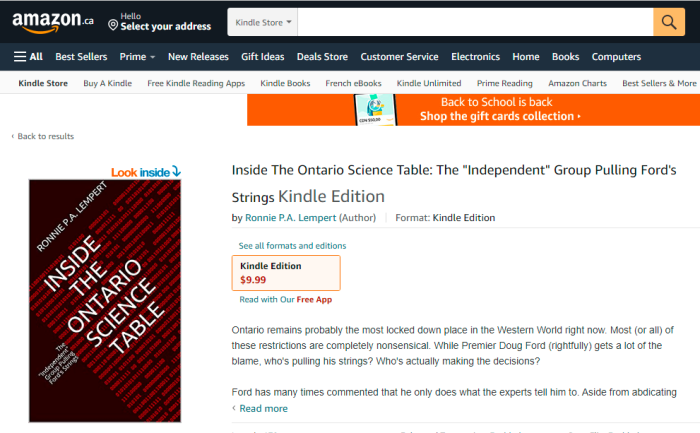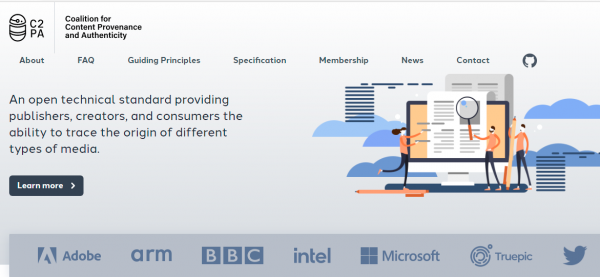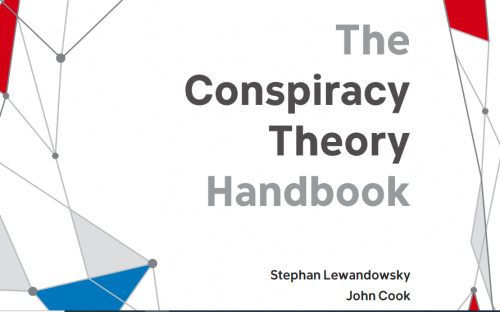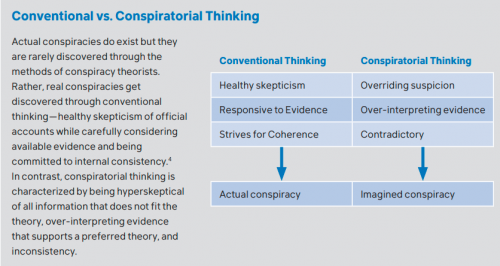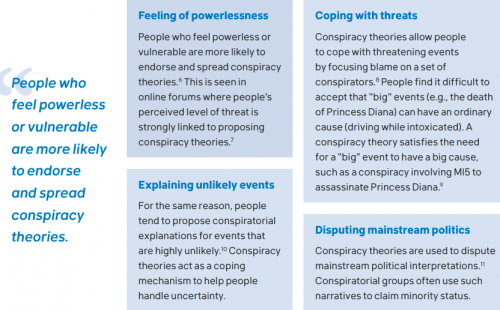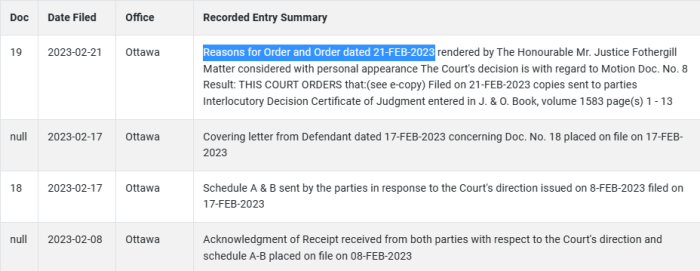
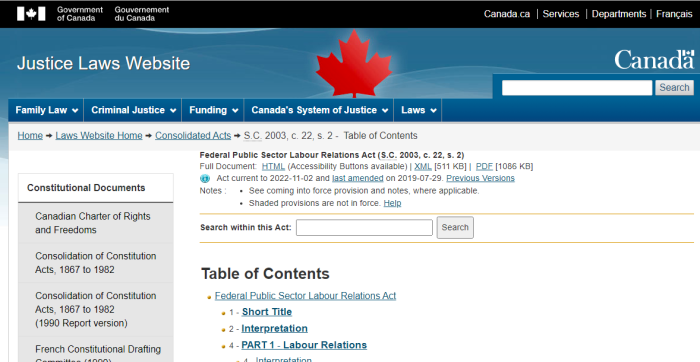
On Wednesday, November 8th, the Federal Court of Appeal heard a case of over 600 Plaintiffs that was struck for being “bad beyond argument“. This was the high profile case of Federal workers, and members of Federally regulated industries who objected to the CV injections being a new job requirement.
There was an additional complication, as the Federal workers were also barred by law from going to Court. The others could, in theory, still use litigation as an option. This effectively “split” the case.
The case is being handled by “Mr. Bad Beyond Argument” himself, Toronto lawyer Rocco Galati.
August 2021: Ottawa announces that “vaccine passport” will be required of all Federal workers, and members of Federally regulated industries in the next few months.
May 2022: Statement of Claim is filed on behalf of over 600 Plaintiffs.
January 2023: There’s a hearing in Federal Court to strike the Claim.
February 2023: Claim struck in its entirety without leave (no permission) to amend regarding the Federal employees. However, it’s struck with leave (permission) to refile for everyone else. The Judge also found that the quality of the writing was “bad beyond argument”.
March 2023: Notice of Appeal was filed.
April 2023: The Appeal Book is filed.
May 2023: The Appellants’ written arguments are filed.
June 2023: The Respondents’ written arguments are filed.
November 2023: The Federal Court of Appeal has hearing to review the case.
The case is on reserve, meaning that the 3 Justices haven’t yet made their findings. This is quite common, though it’s uncertain when it will be released.
Interestingly, the lawsuit wasn’t filed until May 2022, nearly a year after mandates were announced. To put it mildly, it was terribly written, and never stood a chance. That’s been covered in detail here, here, here, and here.
Instead, this is going to be a different focus. Rather than simply pointing out errors and faults with how the case has been handled, serious, constructive feedback will be offered. Here are some ways that the case could have been managed differently, and how it may have survived.
Disclaimer:
This article does not attempt to provide legal advice. Instead, it’s meant as constructive feedback and information with regards to the Adelberg v. HMTK Case. The handing, both at the Federal Court and Federal Court of Appeal was beyond inept and unprofessional. Nonetheless, do not rely on this for your own cases. If you have questions, please seek advice from a competent legal professional
Anyhow, let’s get started.
One of the first things that needs to be pointed out is that employees of the Federal Government — a.k.a. the “Core Public Administration” — don’t automatically have the right to sue. Sections 208 and 236 of the Federal Public Sector Labour Relations Act (FPSLRA) are quite clear about that.
Right of employee
208 (1) Subject to subsections (2) to (7), an employee is entitled to present an individual grievance if he or she feels aggrieved (a) by the interpretation or application, in respect of the employee, of
(i) a provision of a statute or regulation, or of a direction or other instrument made or issued by the employer, that deals with terms and conditions of employment, or
(ii) a provision of a collective agreement or an arbitral award; or
(b) as a result of any occurrence or matter affecting his or her terms and conditions of employment.
No Right of Action
Disputes relating to employment
236(1) The right of an employee to seek redress by way of grievance for any dispute relating to his or her terms or conditions of employment is in lieu of any right of action that the employee may have in relation to any act or omission giving rise to the dispute.
Application
236(2) Subsection (1) applies whether or not the employee avails himself or herself of the right to present a grievance in any particular case and whether or not the grievance could be referred to adjudication.
Section 208 of the FPSLRA gives Federal employees the right to grieve, and that often ends in arbitration. This is similar to how workers in unionized environments, or ones with collective bargaining agreements. Section 236 is the prohibition on seeking remedies in the Courts via lawsuits. This is referred to as a lack of jurisdiction, or an “explicit ouster” from the Court.
With this in mind, Federal workers don’t automatically have the right to go to Court. In fact, they will have to demonstrate that the grievance options available to them are grossly inadequate and/or that the process is corrupted. This didn’t happen here. In fact, it doesn’t appear that any effort was made by anyone to go through the process, at least from reading the pleadings.
Approximately 2/3 of the 600+ Plaintiffs (about 400 in total) are/were members of the Federal Government. In order to sue, they’d have to demonstrate that existing options weren’t adequate.
There’s also the inter-related concern about just how poorly written the Claim is.
Anyhow, let’s offer some constructive feedback.
1. Plead Facts About How Grievance Process Is Unworkable Or Corrupt
The Statement of Claim (SoC) is 50 pages long. While this seems like a lot, the first 15 are just the Parties listed, and the other pages included in the template. The next several are the remedies sought. Then a few pages include some background information on the Parties (which is fine).
The “FACTS” start on Paragraph 22, which is about halfway through the SoC. It goes on from there until about Paragraph 30, approximately 1 page in total, explaining the allegations and pleading facts. Nearly everything else that follows is irrelevant to these proceedings.
Feedback: It would help the case immensely to plead facts about how various clients had attempted to resolve the injection mandates at their jobs. Providing details about what steps were taken (at least by some employees) to avoid this would have helped.
This certainly wouldn’t need to be all 600+ Plaintiffs, but pleading facts for about 20 or 30 of them using grievance options would have gone a long way. Or, considering that there aren’t many options available, perhaps lumping Plaintiffs together could work. For example:
-“Group A Plaintiffs” filed grievances with their union reps.
-“Group B Plaintiffs” contacted their HR Departments to seek alternatives.
-“Group C Plaintiffs” wrote to their employers, refusing, and asking for options.
-“Group D Plaintiffs” tried some combination of different methods.
This may be oversimplified, but remember, Sections 208 and 236 of the FPSLRA give Federal workers the right to grieve, but not to sue. To overcome this, they need to show that there were no options available. And to do that, they need to at least show that they tried some remedies.
Seriously, there were over 400 members and former members of the Federal Government here. Didn’t any of them attempt the grievance process? None of them plead anything of the sort.
2. Plead Facts About Clients Attempting Workarounds Or Exemptions
Paragraph 28(c) is the only mention of Plaintiffs seeking exemptions from these requirements. And only a handful of them are named. While nice to see a mention of it, this isn’t nearly enough.
Feedback: More than just a few Plaintiffs should have been named as seeking exemptions. Additionally, the SoC “should” have given more information on what types of exemptions were sought, and the responses.
Similar to the last point, Plaintiffs who sought exemptions could be grouped together to make things more organized.
-“Group A Plaintiffs” sought exemptions for religious reasons.
-“Group B Plaintiffs” sought exemptions for medical reasons.
-“Group C Plaintiffs” sought exemptions based on freedom of conscience beliefs.
-“Group D Plaintiffs” sought exemptions based on lack of current long term test data.
-“Group E Plaintiffs” sought exemptions for a variety of reasons.
Additionally, Plaintiffs could have tried to obtain various accommodations to allow them to continue working (such as remotely). Information on that could have been pleaded as well.
This could also be used to bolster the claim that the Plaintiffs sought alternative remedies, and only sued as a last resort. It would be an important point to make.
And back to Point #1: considering that by default, Federal workers don’t have the right to sue (they can grieve though), it would have been nice to see what, if any, steps were taken afterwards. But the SoC pleads none of this, and consequently, can’t overcome the s.236 FPSLRA prohibition.
Yes, it’s true that facts are presumed to be true at the initial stages, but they still need to be pleaded in the Statement of Claim.
3. Provide Evidence Of Unworkability In Motion To Strike

It’s true that in Motions to Strike (throw out), evidence is not normally allowed. This is because it’s a preliminary challenge, and the opposing side is trying to say that the suit is fatal flawed regardless.
However, there are a few exceptions to this. These are instances where it will lead to the case being thrown out without any possibility to refile. Jurisdiction is one such exception, and the Statute of Limitations is another. Galati appears to be unaware of this, at least according to Paragraph 3 of his Written Submissions.
Feedback: The first line of defence that the Government has is the “explicit ouster” of s.236 of the FPSLRA. Once again, this is the argument that the court lacks jurisdiction to hear (at least part) of the Claims. If this can not be overcome, then the case is dead in the water.
What should have been done here is have several Plaintiffs submit evidence that they tried to exercise their grievance options. True, this will involve collecting Affidavits. True, they can then be questioned, or cross-examined on this. But such evidence would have helped in demonstrating the unworkability of existing options for Federal workers.
Plaintiffs who file Affidavits could certainly attach as exhibits any documents that show they tried other methods. Emails, text messages, letters, transcripts of recordings, etc…. would all have shown that they attempted to resolve this internally. If enough litigants did this, that would be very powerful evidence.
None of the 400+ Government workers had any evidence to submit for the Motion?
Keep in mind, if people are suing for large sums of money, they’d likely have to testify under oath at some point. Therefore, being cross-examined on an Affidavit hardly seems excessive.
Back to Point #1: if facts had been pleaded about this in the SoC, then it would have been a lot easier. Yes, a Motion to Strike would still be likely, but the Plaintiffs would be in a much stronger position.
4. Allegations Need To Be Particularized (Spelled Out) Clearly

There’s a requirement in the Federal Court Rules to “give particulars” when making allegations of, among other things:
(a) Fraud
(b) Misrepresentation
(c) Breach of Trust
(d) Undue influence
(e) Malfeasance of Public Office
What this means is that there’s a duty for the Plaintiffs to spell out with additional clarity what the accusations are. Galati doesn’t do that here, or in any anti-lockdown cases.
Feedback: If litigants are going to be making accusations of this sort, then it needs to be outlined in much more detail. What specific actions were fraudulent or amount to misrepresentation? What specific actions or statements caused that breach of trust? Instead of just making such bare statements, the underlying information needs to be provided.
Remember, everyone is entitled to confront their accusers. This includes Government officials. How can they respond to allegations if there’s not enough information provided?
If there isn’t enough information available to allege such things, then it would probably be better to just leave them out. It doesn’t help the clients to have the case bogged down unnecessarily.
5. Plead Facts In Support Of Claims Charter Rights Were Breached
Setting aside the issues around jurisdiction, the Courts are generally the proper forum to raise allegations that Charter protections have been violated. And a number of them are raised here:
(a) Section 2, Fundamental Freedoms
(b) Section 6, Mobility Rights
(c) Section 7, Security of the Person
(d) Section 15, Equality Rights
The problem is: while these are listed, there’s little to no information in support of this. As a result, the Defendants are left to guess. While many people can imply the reasons, it still has to be written out in the pleadings.
Feedback: If someone is going to allege that their rights have been violated, it would be helpful to lay out the details of what has happened. How are groups of people being treated unequally? How are people unsecure in their bodies? What mobility rights have been taken away?
The Plaintiffs have suffered mental anguish? Loss of dignity? Okay, then we need more information (facts) about what has happened.
6. Remove Argument From Statement Of Claim
The Statement of Claim more closely resembles a Factum than it does a Claim. It tries to argue what the scientific consensus is, and what the motivations of people are. It also draws the same conclusions that the Court is being asked to do.
Feedback: Instead of trying to argue in a Claim, it would be more helpful to to simply plead what information is available. What events? What dates? Who said what? Making it unnecessarily convoluted may impress many, but confusing the Judge is not wise.
Moreover, arguing caselaw and evidence in the initial pleadings isn’t appropriate. That comes much later, and is pretty basic knowledge in civil procedure. This is (partly) why the Government lawyers are saying that there are no facts pled. They’re right, it’s almost entirely argument.
7. Remove Content That’s Inappropriate In A Civil Claim
This is a no brainer. Courts are limited to certain types of cases, and are not allowed to preside over issues outside of their jurisdiction. It was also part of the reason the Action4Canada case was struck.
(a) Allegations of criminal conduct
(b) Allegations of crimes against humanity
(c) Allegations of violations of the Nuremberg Code
(d) Allegations of violations of the Helsinki Declaration
(e) Allegations of involvement in eugenics schemes
(f) Seeking declarations about what the “scientific consensus” is
Feedback: Drop all of this, and related content from this — and other lawsuits. All it does is lead to Motions to Strike over jurisdiction. If the case is about workers having to take injections to keep their jobs, then don’t lose focus.
8. Name All Plaintiffs Instead Of “John Doe” And “Jane Doe”
Dozens of Plaintiffs in the Style of Cause (front pages) are simply listed as either “John Doe” or as “Jane Doe”, along with their employer.
Feedback: If the lawsuit were actually intended to go ahead, this would be pointless, as they’d all have to be identified at some point. It just wastes everyone’s time. Supposedly, this was done to prevent harassment and intimidation, but their identities could still be found out.
Considering that Government lawyers — supposedly — tried to find out who were anyway, it’s unclear what the point is. Despite what people think about Trudeau and his people, they still are entitled to know who is making the allegations. Think about it: how can one confront their accusers in Court, without knowing who they are?
9. Don’t Suggest Lower Court Judge Was Biased

The Notice of Appeal implies that Justice Fothergill was biased in how he wrote up the February 2023 Order which saw the SoC struck. This isn’t a good idea. The Judge correctly outlined many serious defects in the pleading.
Feedback: This is a dumb idea. Don’t do it. To even imply such a thing, there’d have to be some strong basis for it, or it could be considered contempt of Court.
Also, the comparison to Action4Canada was quite fitting. While the Federal suit was much shorter, it had essentially the same flaws and defects. There was the additional problem of the “explicit ouster” of s.236 FPSLRA.
Would the case have survived if the above recommendations had been implemented? It’s impossible to say for sure, but it would have been a lot more likely.
Again, this article is not meant to provide legal advice. This site in general does not provide advice. If you have questions in your own case, please seek professional input.
Pretty pathetic that this case has taken in over $1.2 million in fees and donations. How is this number arrived at?

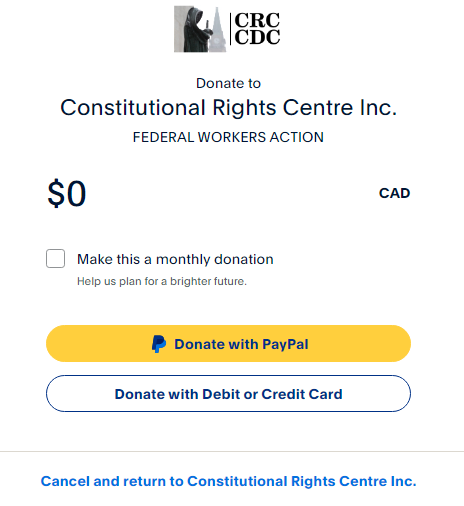
(a) the donations solicited on the Constitutional Rights Centre website
(b) the Retainer Agreement demanded $1,000 from each Plaintiff (or $600,000+)
(c) the email to clients demanding another $1,000 from each (or $600,000+)
A lot of money has been wasted, and all for a lawsuit that never stood a chance. Now, hundreds of Plaintiffs — with valid problems — are going to find that they’re barred by the Statute of Limitations from trying again.
Meanwhile, a “moronic troll” online can break this case apart with little effort. Have to wonder what’s really going on here.
This article will likely lead to Galati suing the site again. Oh well. It’s not like the last one was well written, or even coherent.
FEDERAL VAXX PASS CHALLENGE (APPEAL)
(1) FCA Adelberg V. HMTK A-67-23 Notice Of Appeal
(2) FCA Adelberg V. HMTK A-67-23 Appeal Book
(3) FCA Adelberg V. HMTK A-67-23 Appellants MFL
(4) FCA Adelberg V. HMTK A-67-23 Respondents MFL
FEDERAL VAXX PASS CHALLENGE
(1) https://policeonguard.ca/wp-content/uploads/2022/06/Filed-SOC.pdf
(2) Federal Court Vaccine Mandate Challenge
(3) Federal Vaccine Passport Challenge Retainer Agreement
(4) Federal Court Vaccine Mandate Challenge Motion To Strike
(5) Federal Court Vaccine Mandate Challenge Affidavit Of Service
(6) Federal Court Vaccine Mandate Challenge Responding Motion Record
(7) Federal Court Of Canada Rules
(8) Federal Court Decision On Motion To Strike (Archive)
(9) https://decisions.fct-cf.gc.ca/fc-cf/decisions/en/item/522970/index.do
(10) https://www.canlii.org/en/bc/bcsc/doc/2022/2022bcsc1507/2022bcsc1507.html
(11) https://laws-lois.justice.gc.ca/eng/regulations/sor-98-106/page-9.html#h-1013947
(12) https://www.laws-lois.justice.gc.ca/eng/acts/P-33.3/page-13.html#h-406405
PRECEDENTS CREATED
(1) https://www.canlii.org/en/ca/fct/doc/2023/2023fc280/2023fc280.html#par85
(2) https://www.canlii.org/en/ca/fct/doc/2023/2023fc929/2023fc929.html#par17
(3) https://www.canlii.org/en/bc/bcsc/doc/2023/2023bcsc1701/2023bcsc1701.html#par30
MONEY
(1) Letter to Federal Worker Plaintiffs
(2) Federal Workers Action Donation Link For PayPal
(3) Ontario First Responders Action Donation Link For PayPal
(4) School Action Donation Link For PayPal
(5) Police Officer Action Donation Link For PayPal
(6) https://www.web.archive.org/web/20220526170932/https://www.constitutionalrightscentre.ca/
(7) Federal Workers Retainer Agreement
(8) Ontario First Responders Retainer Agreement
(9) Donate To Public Citizens Inquiry
(10) Donations For Supposed B.C. Doctors Action

